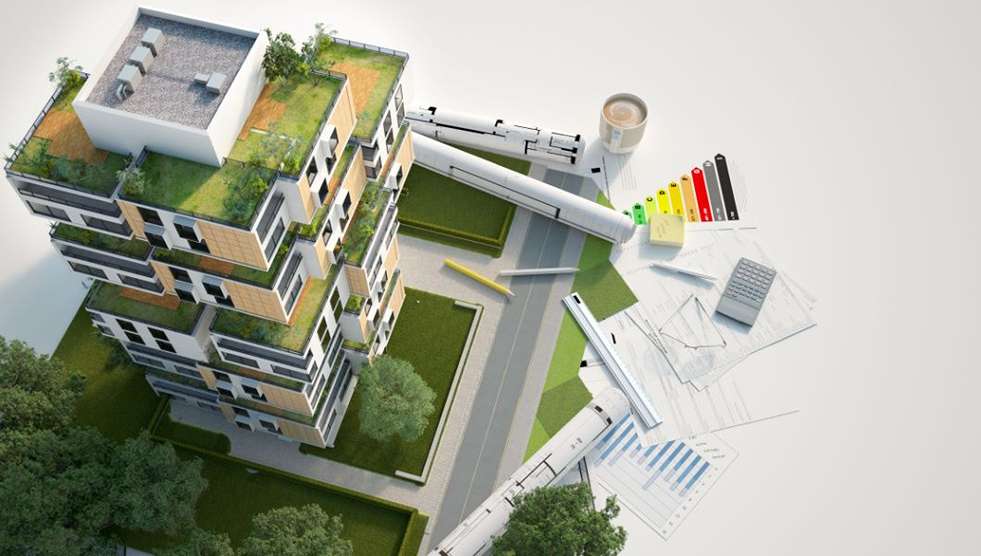Energy Modeling Service
Accurate energy modeling for maximum efficiency and savings
What is Building Energy Modeling?
Building energy modeling is a simulation process that evaluates a building's energy consumption, resource use, and environmental impact. By analyzing factors like HVAC systems, lighting, insulation, and even weather conditions, energy modeling helps design professionals create buildings that consume less energy while maintaining occupant comfort.
This advanced analysis can produce actionable insights to help meet energy performance goals, comply with green building certifications (such as LEED and WELL), and reduce operational costs over time.
Energy-Analysis or Energy-modeling is used to:
- Predict the monthly energy consumption and bills
- Predict the annual energy cost
- Annual CO2 emissions
- Compare and contrast different efficiency options
- Determine life cycle payback on various options
What is the Best Time for Energy Modeling?

Timing can make or break the success of energy modeling. The earlier, the better. Ideally, energy modeling should be incorporated during the conceptual and schematic design phases of a project. This allows architects, engineers, and contractors to make informed design decisions when they can still be implemented without significant rework or costs.
Energy modeling can also be revisited in later stages for design refinement, performance optimization, and compliance documentation to validate and adjust designs before construction begins. For retrofit projects, energy modeling is essential for identifying existing inefficiencies and providing a roadmap for improvements.
Get In Touch
Benefits of Energy Modeling
Energy modeling offers several advantages that extend to every stakeholder in the building design and construction process.
1. Enhanced Energy Performance
Energy models identify effective strategies to improve a building’s overall efficiency, cutting down utility costs and reducing total energy use.
2. Cost Optimization
Eliminate guesswork and reduce costs by evaluating the impact of different systems, materials, and designs before they are installed.
3. Code and Certification Compliance
Ensure your project meets stringent energy codes and qualifies for certifications like LEED, WELL, and ASHRAE compliance with proof from advanced simulations.
4. Scenario Testing
Explore multiple "what-if" scenarios—such as comparing insulation materials or HVAC options—to make smarter design decisions.
5. Sustainability Without Sacrifice
Achieve sustainable building performance targets without compromising on occupant comfort or design aesthetics.
What Do I Need Before Getting Started with Energy Modeling?
To set your energy modeler up for success, gather these key inputs before getting started:
- Architectural Drawings: Plans, elevations, and sections provide critical insights into building geometry.
- Material Specifications: Details on insulation, windows, walls, and roofing materials.
- HVAC System Design: If available, include specifications for heating, cooling, and ventilation systems.
- Building Location: Climate data heavily influences energy performance.
- Building Usage Details: Operational schedules, occupancy data, and expected plug loads.
The more accurate and complete your inputs, the more reliable your energy model will be.
Which Software is Best?
This depends on the purpose of study and available time at hand. One of the software - eQuest is quick, reliable and mostly acceptable for compliance; while other software like IES VE provide more in-depth energy modeling, daylight and thermal analysis, BIM friendly solutions.
Why Choose NY Engineers?
Nearby EngineersNew York Engineers are your partner in creating a green future where we don't need to worry about high utility bills and energy wastage. We have created hundreds and thousands of energy models for varying properties including commercial, residential and industrial uses. Our energy modeling enables you to find out the most effective ways to reduce energy consumption and get the lowest annual costs for maximum return on investment.
We can handle projects of varying complexity, technological components and systems to create the most efficient design to realize your objectives and goals. We can help you save up to 45% on your project through energy modeling during the initial phase of your designing. Existing buildings planning renovations can also benefit hugely from energy modeling to ensure the project is heading in the right direction.
Our team can also customize our service based on your unique needs. Some clients may not need a full-scale energy modeling and can benefit from less costly and time consuming assessments. We can help you determine the right steps to take and create a suitable energy model for simpler and smaller buildings.


